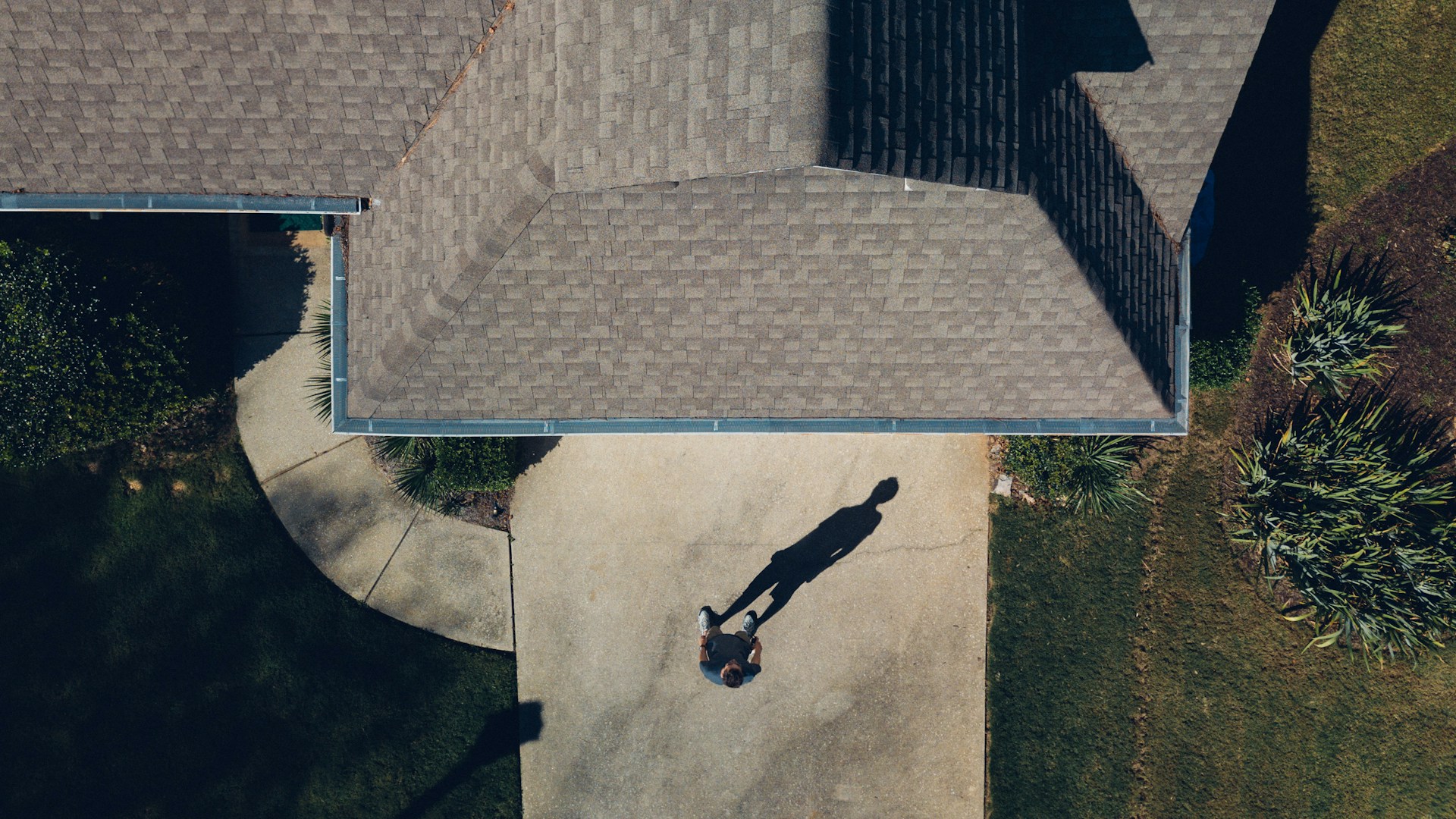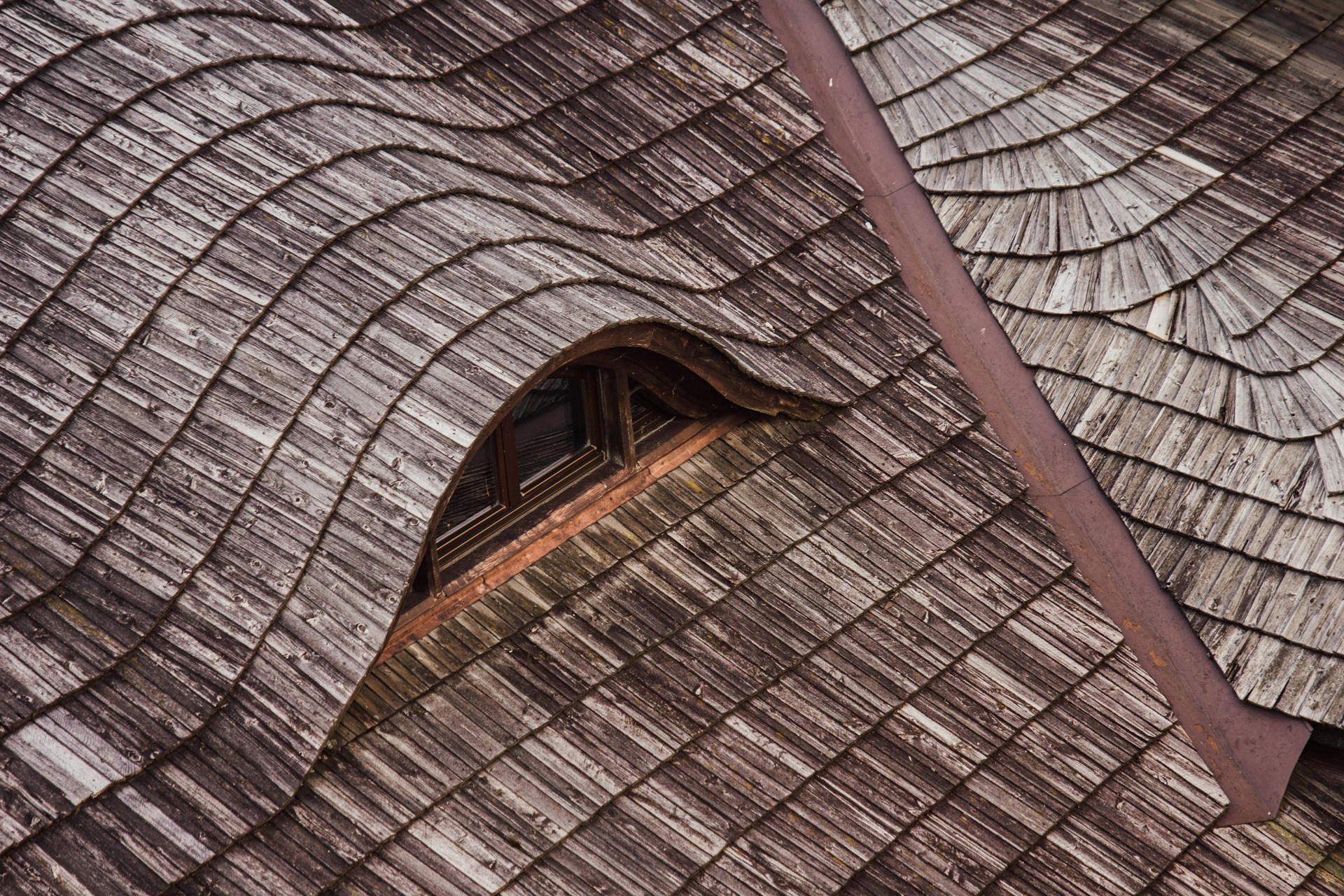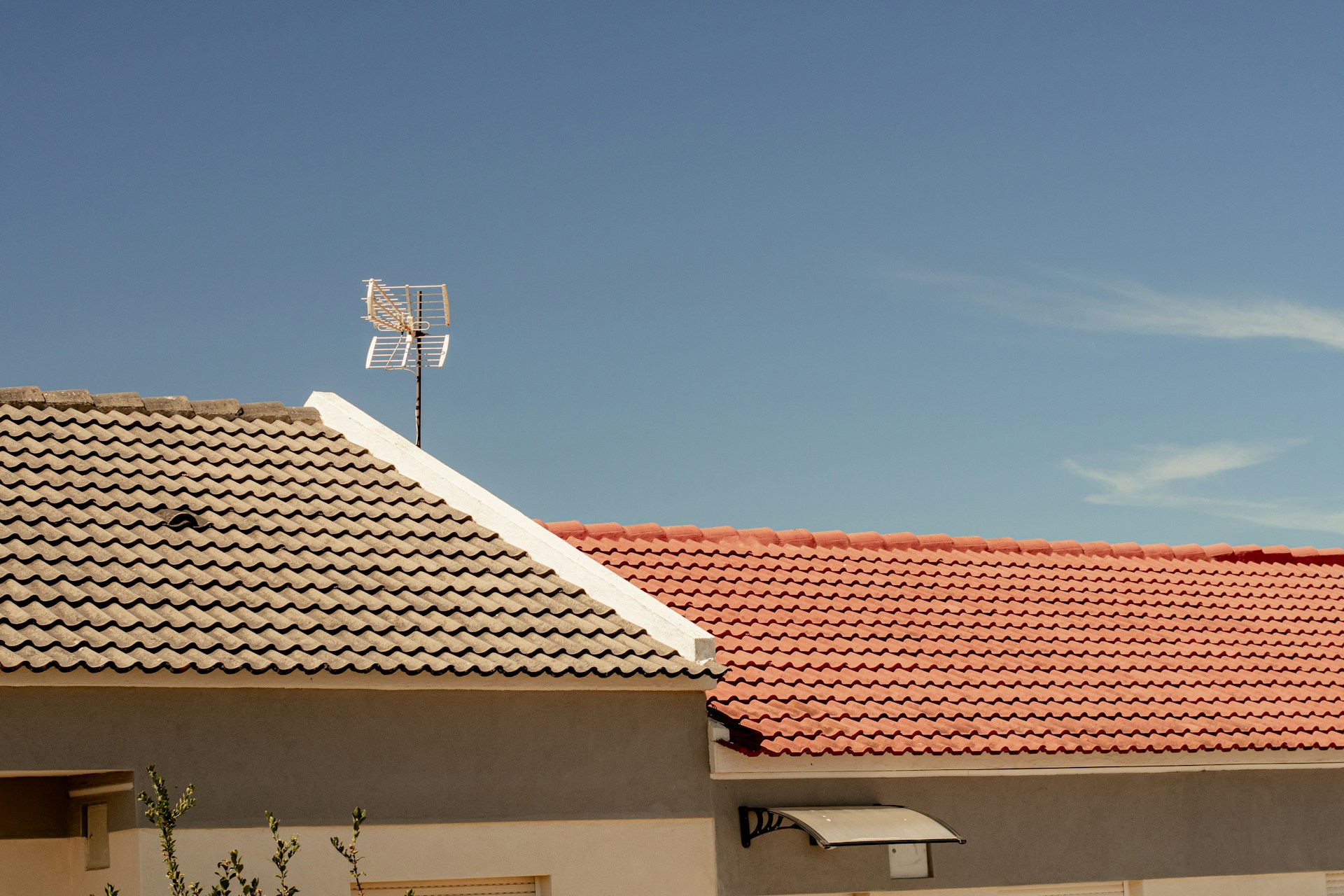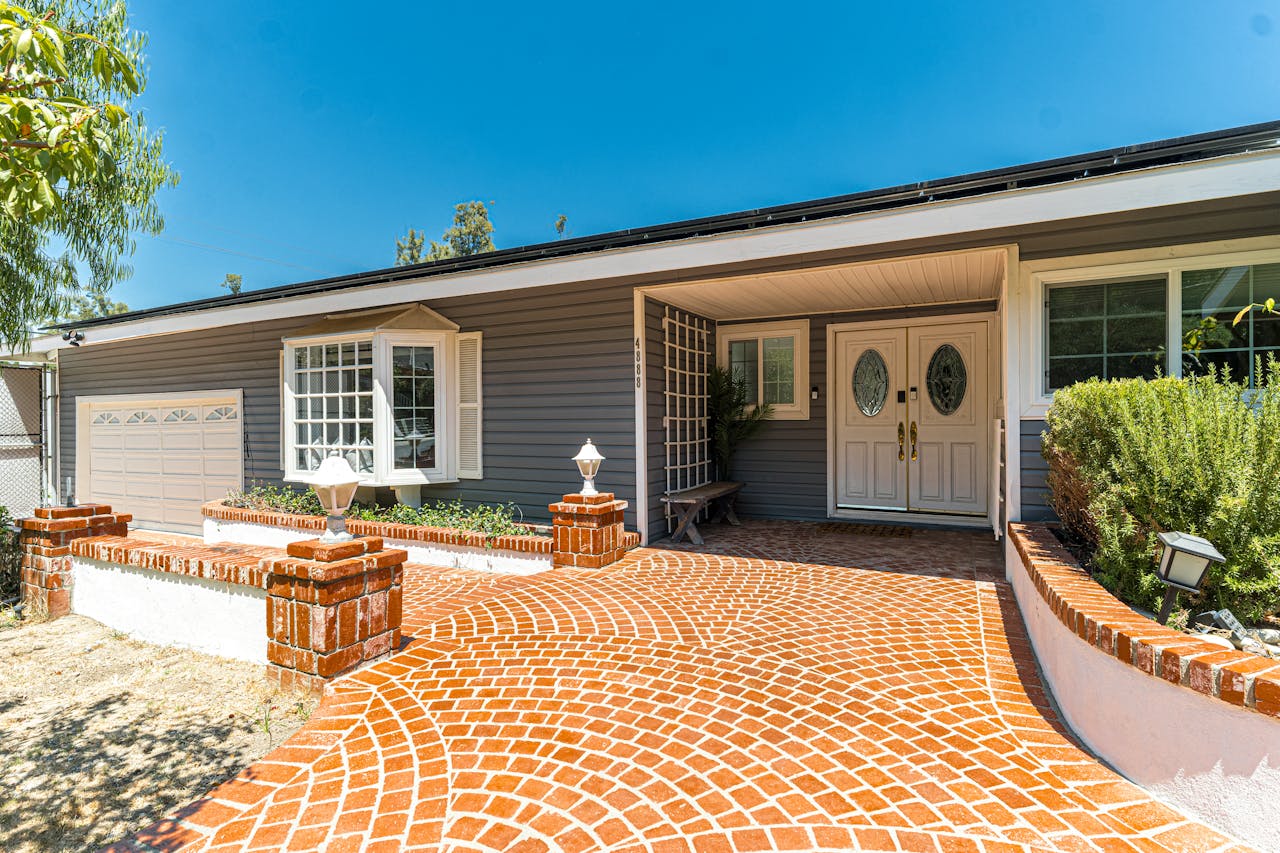Like so many things in life, the answer is: it depends.
It depends on your budget. It depends on the look you’re going for. It depends on the shape and slope of your roof, the climate you live in, how long you plan to stay in the house, and even local building codes. There is no one-size-fits-all roofing material, but knowing the pros and cons of each option can help you make a smart, confident decision.
Let’s walk through the most common materials—and what we’ve seen firsthand from years of inspecting, repairing, and replacing roofs.
Asphalt Shingles: The Popular Choice

This is by far the most common type of residential roofing material in the United States—and for good reason. Asphalt shingles are affordable, come in a variety of styles and colors, and are relatively easy to install.
There are three main types:
- Three-tab shingles – These are the flat, classic shingles that were originally made to mimic the look of slate. They’re lightweight and used to be the budget-friendly go-to, but in today’s market, they’re often not any cheaper than entry-level architectural shingles. In fact, due to changes in manufacturing and supply, it’s not uncommon to see 3-tab bundles cost just as much—or more—than architectural ones. For that reason, we don’t install 3-tab shingles anymore at Roofs Made Easy.
- Architectural (or dimensional) shingles – These offer a more textured look, better wind resistance, and increased durability. This is what most homeowners today choose.
- Designer shingles – These take things up a notch with custom shapes, bolder colors, and styling that mimics premium materials like slate or wood shake.
Pros: Affordable, widely available, comes in many colors and styles, proven performance Cons: While modern shingles have improved, they are still less durable than premium materials like metal or slate. They can be vulnerable to hail, strong UV exposure, and high winds over time.
Metal Roofing: Durable and Energy-Efficient

Metal roofing has grown significantly in popularity, especially among homeowners looking for durability and energy efficiency. But not all metal roofs are created equal.
When most people think of metal roofing, they picture “barn metal”—corrugated panels held down with exposed screws. This is known as exposed fastener metal roofing, and while it’s common, we’ve seen major issues with it.
Here’s the problem: each of those screws has a small rubber washer meant to create a seal. But over time, especially under sun and weather exposure, those washers dry out, crack, and fail. We’ve inspected 10-year-old exposed fastener metal roofs where every room in the house had a leak due to thousands of tiny holes caused by deteriorated fasteners.
For that reason, we strongly prefer standing seam metal roofing. These panels have hidden fasteners, which are protected from the elements. They give a much cleaner look and drastically reduce long-term maintenance issues.
Pros: Extremely durable, excellent wind and hail resistance, energy efficient, low maintenance, and visually striking (especially standing seam) Cons: Higher cost upfront, noisier in heavy rain, and not ideal for complex roofs with lots of valleys, dormers, or cut-up designs. Oil canning (a cosmetic waviness in the panels) can occur if not properly installed, but it doesn’t affect performance.
Wood Shake: Rustic Charm, High Maintenance

Wood shake roofing—typically made from cedar—has a rustic charm and was once a common sight on higher-end homes. Today, it’s much less popular.
Why? Because it just doesn’t hold up like modern materials do. Wood breaks down over time when exposed to the elements. It can warp, crack, grow moss, and eventually rot. In many areas, it’s not even allowed under certain fire codes.
Pros: Natural, traditional look; unique aesthetic appeal Cons: High maintenance, short lifespan compared to other materials, vulnerable to weathering and pests, often more expensive to install and maintain
Tile & Slate: Premium Durability and Beauty

These are premium roofing materials—both in terms of look and longevity.
Clay and concrete tile roofs are very popular in warm climates like Florida, Arizona, and parts of California. They’re great for heat resistance and durability but are heavy and require special framing.
Slate is the gold standard of long-lasting roofing. We’ve inspected slate roofs that are over 100 years old and still holding strong. The downside? The cost. A slate roof can run $80,000 to $100,000 or more, and installation must be done by skilled specialists.
Pros: Unmatched beauty, extreme durability, fire and pest resistance Cons: Extremely heavy, expensive to install and repair, requires proper structural support
Flat Roof Systems: For Low-Slope Surfaces

While not used for steep-slope residential homes, flat roofing materials are essential for porches, additions, and some modern or mid-century home designs.
The three most common systems include:
- EPDM: A flexible rubber membrane, black in color. It’s time-tested and reliable.
- TPO: A white, heat-reflective membrane, gaining popularity for energy efficiency.
- Modified Bitumen: An asphalt-based material installed in rolls, often using torch-down or adhesive application.
Each system has its place depending on roof shape, drainage needs, and regional climate.
Pros: Designed specifically for flat or low-slope surfaces, durable when installed correctly Cons: Shorter lifespan than pitched-roof systems, prone to ponding water if not properly pitched, requires more careful maintenance
What We Recommend in Most Markets
If you’re in a typical residential neighborhood, the vast majority of homes will do best with a high-quality architectural asphalt shingle roof.
It strikes the right balance of price, performance, and appearance—and when installed correctly, it can last 30–40 years or more depending on the shingle line and regional weather.
For homeowners who plan to stay in their home long-term, and whose rooflines are simple enough to accommodate it, standing seam metal is a fantastic upgrade. It’s more expensive, but it gives you decades of peace of mind and a clean, modern look.
What We Don’t Recommend
- 3-tab shingles – At Roofs Made Easy, we don’t offer them. They simply don’t perform as well as architectural shingles, and the pricing gap has largely disappeared.
- Exposed fastener metal roofs – While they have their place on barns and utility buildings, we don’t recommend them for primary residences due to long-term leak issues.
- Wood shake – It may be pretty, but the high cost and short lifespan make it impractical in most cases.
How We Help You Decide
At Roofs Made Easy, we walk you through every option. We help you weigh not just the material costs, but also:
- Aesthetic preferences
- Energy efficiency
- Expected maintenance
- Roof slope and design
- Warranty coverage
- Local climate concerns
- Resale value implications
You don’t have to guess. And you don’t have to pick from a limited menu of “what we carry.” We’ll show you what makes the most sense for your roof, even if you can’t buy it from us.
No pressure. Just honest information, side-by-side comparisons, and expert guidance.
That’s roofing made easy.
